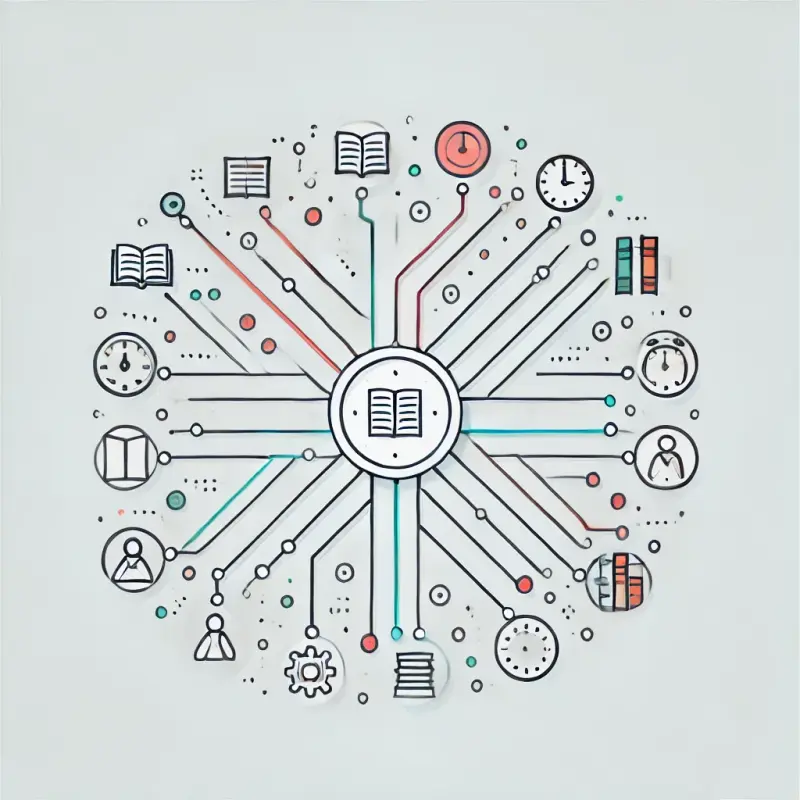How to Use Mind Maps for Studying Literature: Visualizing Characters and Events
Mind maps are powerful tools that facilitate the visualization and organization of complex information. In literature studies, they can be particularly effective in breaking down intricate narratives, character relationships, and event sequences. By creating a visual representation of these elements, students and enthusiasts can gain a deeper understanding of literary works and enhance their analytical skills.
Understanding Mind Maps
A mind map is a diagram that represents ideas and concepts branching from a central theme. It mirrors the way our brains naturally process information, allowing for a free flow of ideas and associations. In the context of literature, the central theme could be a novel, a play, or a poem, with branches representing characters, events, themes, and settings.

Benefits of Using Mind Maps in Literature Studies
-
Enhanced Comprehension: Visualizing the relationships between characters and events helps in understanding the narrative structure and thematic development.
-
Improved Memory Retention: The combination of visual elements and hierarchical organization aids in better recall of details.
-
Creative Analysis: Mind maps encourage creative thinking, allowing students to explore connections and interpretations that might not be immediately apparent through linear note-taking.
Visualizing Characters with Mind Maps
When analyzing characters, mind maps can help delineate relationships, traits, development arcs, and their roles within the story. Here's how to create a character-focused mind map:
-
Central Node: Place the name of the character at the center.
-
Primary Branches: Create branches for key aspects such as Background, Personality Traits, Relationships, and Development.
-
Secondary Branches: Under each primary branch, add sub-branches. For example, under Relationships, include connections to other characters with notes on the nature of each relationship.
-
Use of Colors and Images: Incorporate colors to differentiate between various aspects and add images or symbols that represent key traits or relationships to make the map more engaging.
Mapping Events and Plot Structures
Mind maps can also be utilized to chart the sequence of events in a narrative, making it easier to analyze plot development and thematic progression.
-
Central Theme: Write the title of the literary work in the center.
-
Chronological Branches: Create branches for each major event or chapter, arranged in chronological order.
-
Sub-Events and Details: Add sub-branches to detail significant sub-events, character actions, and outcomes.
-
Thematic Connections: Use cross-linkages to highlight how certain events are interconnected or how they contribute to overarching themes.
Practical Applications in Literature Studies
-
Comparative Analysis: Mind maps can be used to compare and contrast characters, themes, or events within a single work or across multiple works.
-
Essay Planning: They serve as effective tools for organizing thoughts and structuring essays, ensuring a coherent flow of ideas.
-
Group Discussions: In group settings, mind maps can facilitate collaborative analysis and ensure all participants have a shared understanding of the material.
Tips for Effective Mind Mapping
-
Simplicity: Keep the information concise; use keywords and short phrases.
-
Hierarchy: Maintain a clear hierarchical structure to represent the relationships between different elements.
-
Visual Enhancements: Incorporate colors, images, and symbols to make the mind map more engaging and memorable.
-
Regular Updates: As you delve deeper into the literary work, update your mind map to reflect new insights and understandings.
Exploring Themes and Symbolism with Mind Maps
In addition to characters and events, mind maps are excellent for dissecting themes and symbols in literature. Themes like love, conflict, or identity often weave through a narrative, connecting characters and events. Symbols, such as objects, settings, or motifs, add depth and layers to the text. Here's how to integrate these into your mind map:
-
Theme Mapping: Place a central theme at the center of your map. Branch out with examples of how the theme is explored in different parts of the text, including relevant quotes or scenes.
-
Symbol Webs: Start with a significant symbol, like a recurring object or metaphor, and create branches for its appearances and interpretations throughout the story. Include its relevance to the plot and its emotional or thematic resonance.
Incorporating Settings and Timeframes
Settings and timelines are crucial for understanding context. Use mind maps to outline the story's geographical and temporal elements:
-
Setting Analysis: Start with a central location (e.g., a city or a fictional world) and branch out with details like descriptions, its influence on characters, and its symbolic meaning.
-
Timeline Visualization: Map the sequence of events chronologically, linking significant actions, decisions, and outcomes. This helps clarify cause-and-effect relationships and track character development over time.
By expanding your mind map to include these aspects, you create a multidimensional view of the literary work, enriching your analysis and interpretation.
Conclusion
Mind maps are versatile tools that can significantly enhance the study of literature. By providing a visual representation of characters and events, they aid in comprehension, retention, and analysis, making the exploration of literary works a more interactive and insightful experience.
Articles
Inscrivez-vous à nos alertes pour recevoir nos dernières publications directement dans votre e-mail.